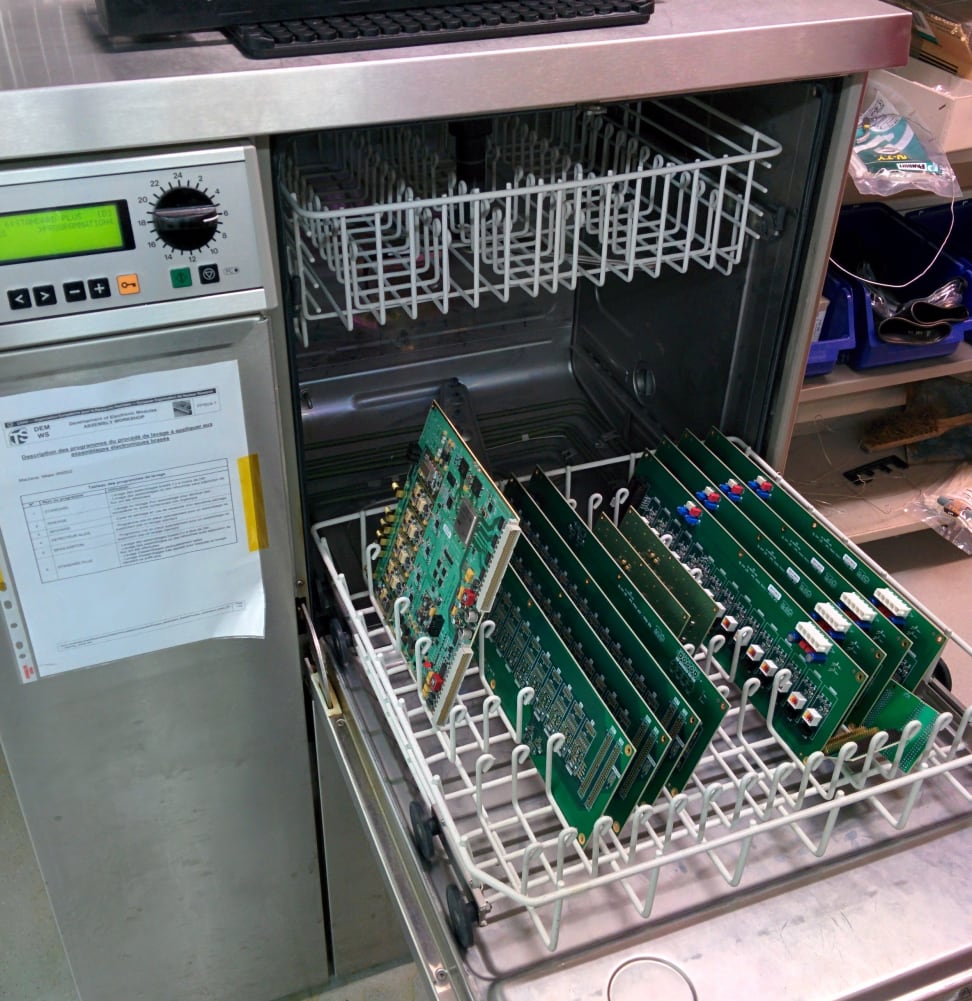This Dishwasher Is Used To Clean Circuits In An Atom Smasher
It makes sense when you think about it... Sort of.
 Credit:
Credit:
Products are chosen independently by our editors. Purchases made through our links may earn us a commission.
Warning: Do not put circuit boards in the dishwasher. I repeat: Do not put circuit boards in the dishwasher. Unless you're a scientist at CERN and working on some of the most important problems in particle physics.
Yes, the above image is a dishwasher filled with circuit boards—circuit boards destined for the Large Hadron Collider (LHC), the biggest particle accelerator in the world. What are a bunch of super smart scientists doing putting electronics in a dishwasher? Why, they're cleaning them of course.
This dishwasher is not your average dishwasher. It's actually a professional cleaning device often used in the pharmaceutical industry, but it works much like a consumer dishwasher. It features a stainless steel pumping system and case, as well as chemically resistant materials.
These kinds of circuit boards are highly sensitive to radiation and ozone contamination in the LHC tunnels, so it's important that they are rinsed on a routine basis. Such cleaning can prolong the life of the circuits.
So how exactly do the machines clean them? Sylvain Kaufmann, of the Machine Protection and Electrical Integrity group, explained in a CERN blog post:
"Indeed, ionized water can generate major problems for the electronics, decreasing the reliability of the integrated circuits. It leaves residue on the surface of the boards, which may be detrimental to the reliability of the assembly. The main associated risk is electromigration—the transport of material caused by the gradual movement of the ions in a conductor. Therefore, we use de-ionized water in the rinsing process."
I'm no expert on electromigration, Dr. Kaufmann. I just hope the circuits are dry when you insert them back into that 17-mile-wide atom smasher you’ve built yourself there in Switzerland.
Via: io9
Hero Image: Clara Nellist/CERN
